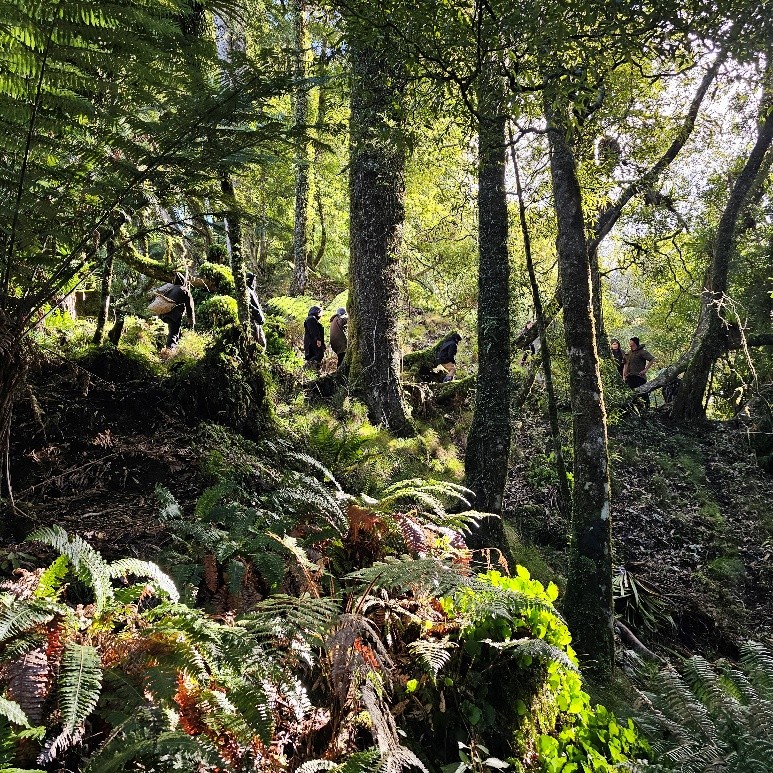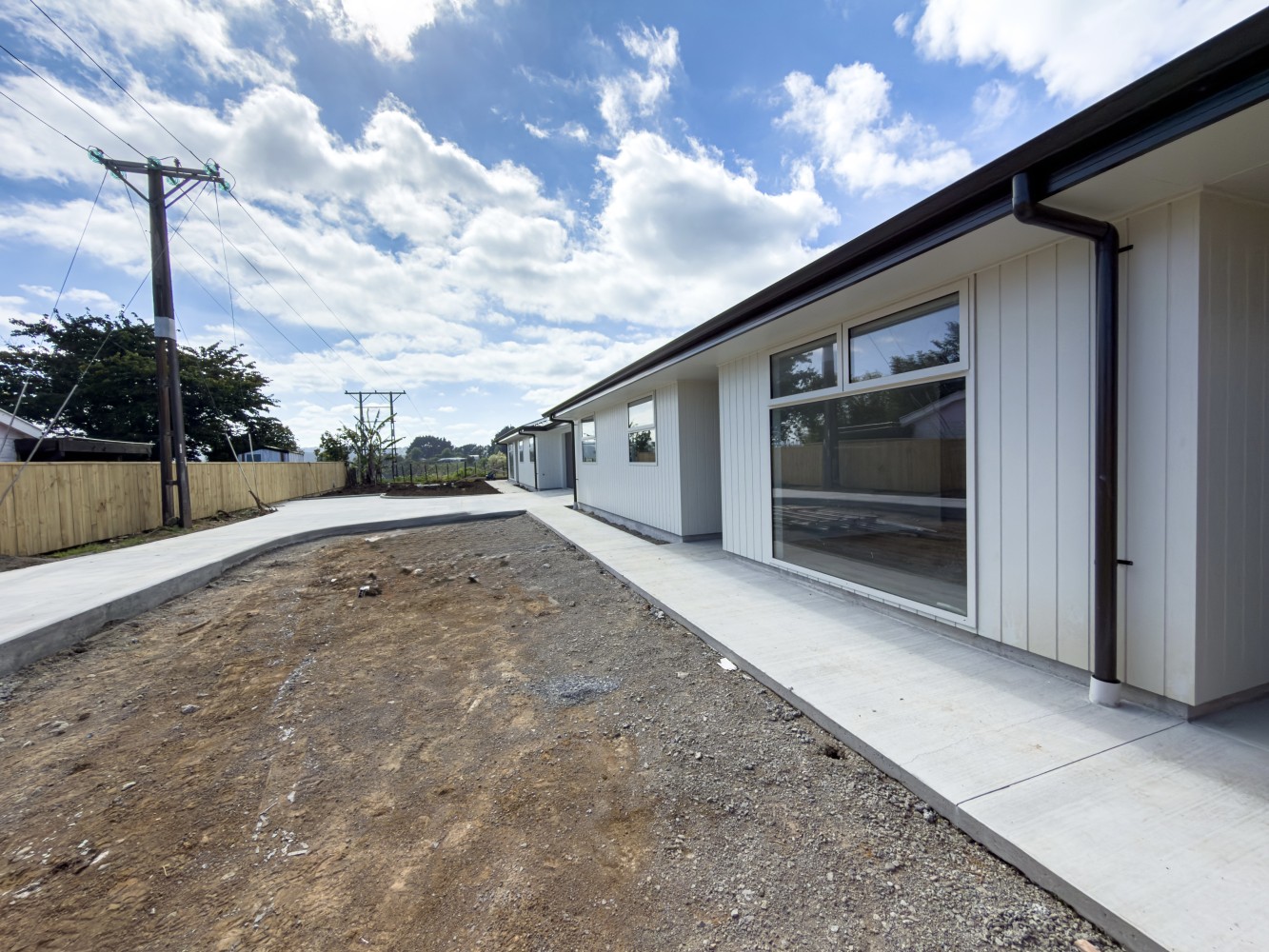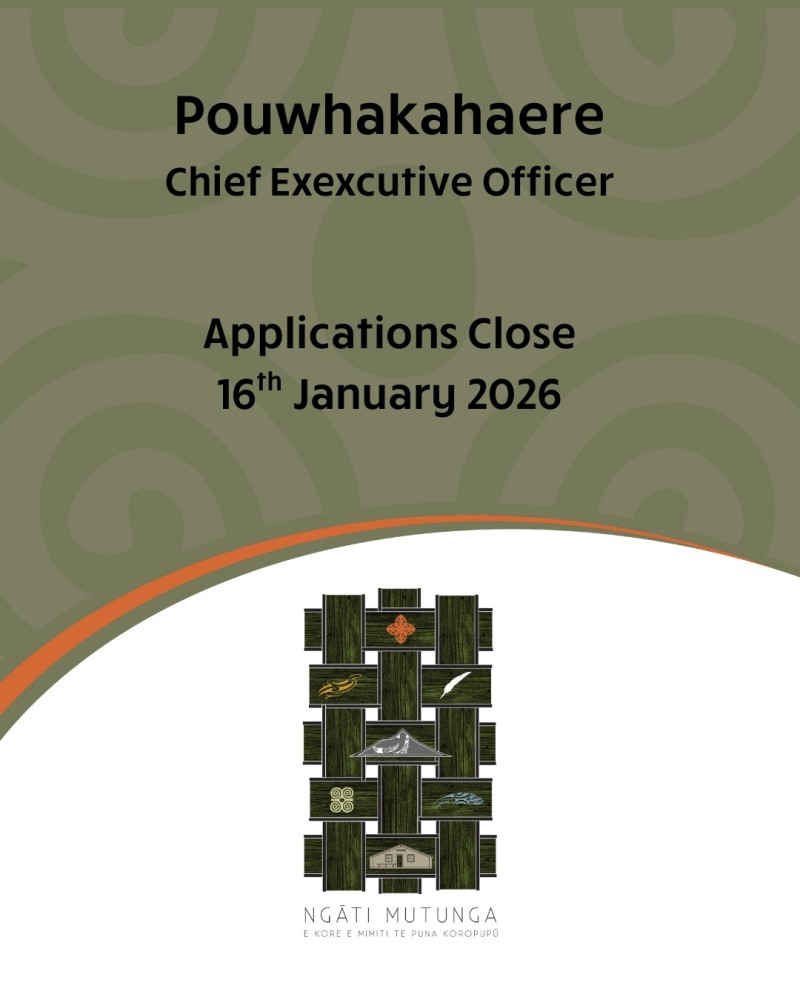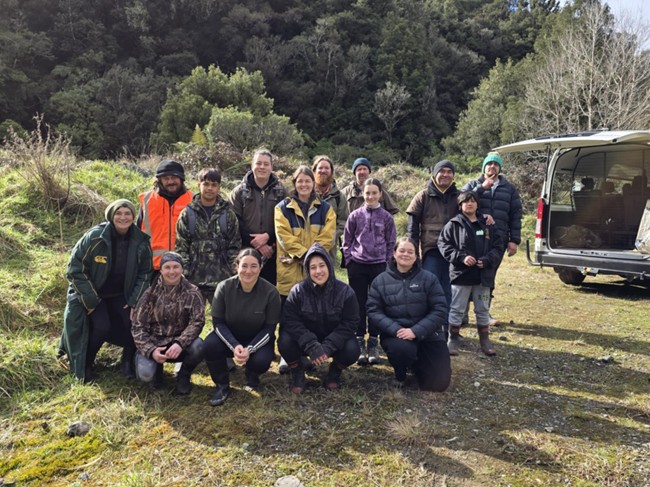
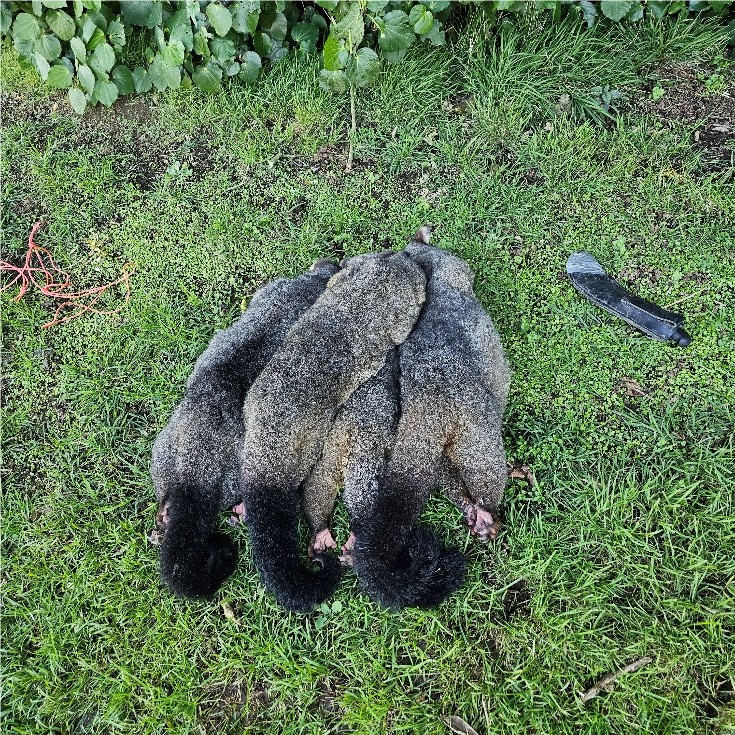
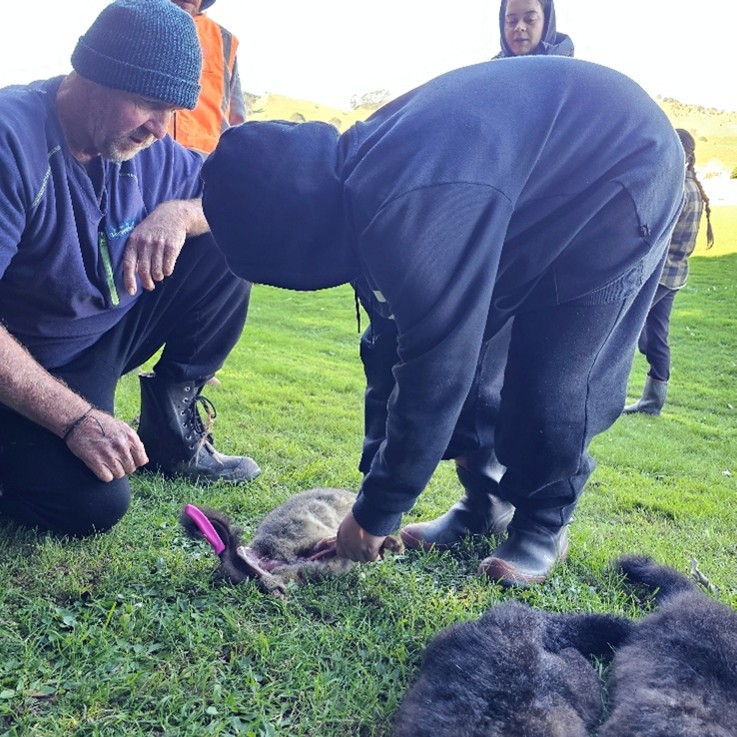
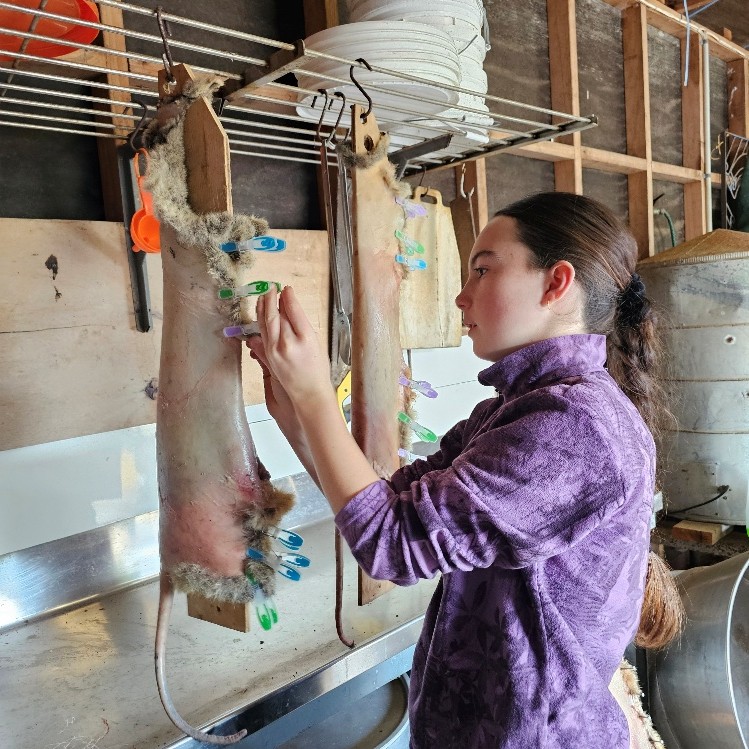
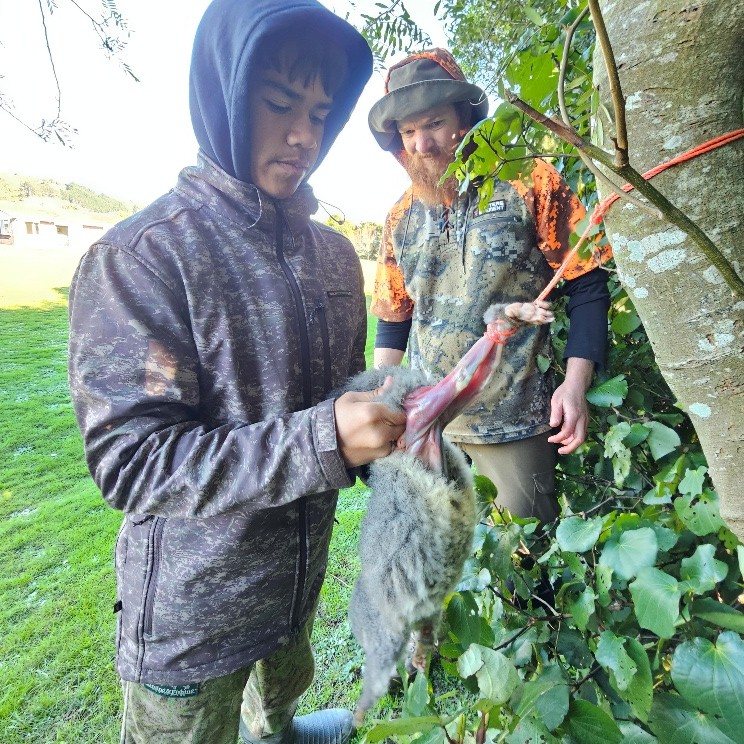
Early in August we completed our much anticipated Possum Wānanga held at Pukearuhe marae. Overall, this event was a great success with all participants going away happy with what was achieved throughout the whole five days.
This wānanga covered many exciting new kaupapa for Ngāti Mutunga and although attendance was low, I think this was the best outcome for piloting our programs for the future. Kaupapa included;
- Possum Wānanga – Engaging and teaching our rangatahi/tamariki/whānau the basics of trapping possums for the purpose of skinning, skinning the possums and then exploring various methods of tanning the skins.
- Cultural exchange – Indigenous whānau from the Boonwurrung mob, Victoria, Australia were invited along to stay at the marae and share their traditional stories and knowledge regarding possums in their culture and possum cloak-making.
- Te Rarama – the Ngati Mutunga education plan (Whiria te mātauranga o Ngāti Mutunga) was put into practice for the first time at this wānanga with students able to earn levels 2 & 3 unit standards and micro-credentials for their mahi.
The whole process went reasonably smoothly thanks to our excellent facilitators, kaimahi and educators.
We began with a small pōwhiri at Pukearuhe marae on Saturday morning for the manuhiri from Ahitereiria (The Mahoney/Clarke whānau) and Te Rarama followed by whakawhanaungatanga and lunch. After lunch, a group went out to set up a trap-line for trapping possums. The site chosen for this was just through the Moki tunnel at Tangitu Conservation area. Hunting permits were acquired from DOC for this mahi. A Health & safety plan has been tailored for this event and safety briefings and roll-calls were carried out throughout each field trip.
The following days included more trap setting and clearing out in the ngāhere, whakawhanaungatanga and more story-sharing. There was plenty of laughter and learning throughout the wānanga with opportunities for all participants to practice setting out the traps and ‘dispatching’ of the possums caught. All possums were brought back to the marae for processing. By the end of the last trapping day, we had 17 fresh possums, a good tally considering the bright moon and first-time experience for the majority of participants.
Processing included demonstration of two different methods of skinning, firstly removing the skins whole by ‘peeling’ them of like a sock which required an amount of strength, secondly using a knife and skinning as you might a sheep. Each participant skinned at least one possum each. The Tanning process takes a little longer and we were unable to complete the entire process as it takes a few days to be effective enough to produce good quality skins, but we experimented with salting, drying and smoking the furs. Dean will complete this process and ultimately return all the skins to Ngāti Mutunga. Four possums were gutted and hung ready for cooking and tasting at the Wednesday hāngi.
Wednesday was a much-needed quieter day preparing the hāngi with as much involvement and leadership from rangatahi as possible. Two hāngi were prepared in order to keep the possums out of the main hāngi as requested by some whānau. The hāngi was served for dinner Wednesday evening and was well attended by all parties involved. Interestingly, aboriginal Australians have a similar process for cooking as us, using the same earth-oven and heated stones technique except the fire is lit in the hole along with the stones and then the food is packaged and placed in the hole before being covered with the dirt. No mats, sacks or baskets are used, which makes it difficult when digging it back up.
During each stage of this wānanga – Pōwhiri, mahi in the ngāhere, hāngi and ‘marae life’, Te Rarama would periodically pull our rangatahi aside for a classroom session to go over each activity and the curriculum relevance to help them fill out the required paperwork to gain their credits and/or unit standards. The rangatahi were closely observed and in some cases recorded to capture their learning. Te Rarama are putting together a digital summary of this mahi and will no doubt share this with us when they have it completed.
Throughout the wānanga, we learned of the traditional practices in the aboriginal culture regarding possum-cloak making. Kerry Clarke brought with her many possum skin creations to share and to help tell their stories. These included a possum-skin cloak, smaller single-skins, dolls, patches for us to practice sewing possum skins, artwork and ostrich feather jewellery. Each cloak is traditionally hand-sewn with sinew from the kangaroo tail and intricately etched with designs on the clean side, which tell the story of the individual or their people depending on the nature of the cloak. Designs are burned into the skin and painted with a yellow ochre not unlike our own kōkōwai and other dyes extracted from plants. It is common practice for a baby to receive their first skin or mini cloak at birth and then skins are added with new stories as the child grows and build upon their experiences and achievements. Then, at the end of life, the person is buried in their cloak. Every possum-skin cloak made in Australia now is made from possum skins imported from Aotearoa. Sadly, they are not permitted to hunt and skin their own possums under the current laws, so they were so grateful to be able to come here and learn about this process alongside our whānau. It was good for us to hear about the possum from a taonga perspective to remind us of the possum’s story when we are carrying out our pest control. The possum is a taonga in its traditional home. Equally, our aboriginal manuhiri understood the need for us to control the numbers of possums in our bush, especially once they had seen the destruction they can cause when they were out there trapping.
It was such a great learning experience for everyone and though it went really well, we definitely have some good notes for improvement in the future, mostly around logistical planning and scheduling. We believe that we can better engage whānau for encouraging more participation next year and the Mahoney/Clarke whānau would like to do the same from their end to hopefully bring more of their own rangatahi if we can accommodate them.
I would like to formally acknowledge and thank Dean Redshaw for facilitating the possum process, Whiti for the kai and Te Rarama for their enthusiasm in lifting up our rangatahi.
